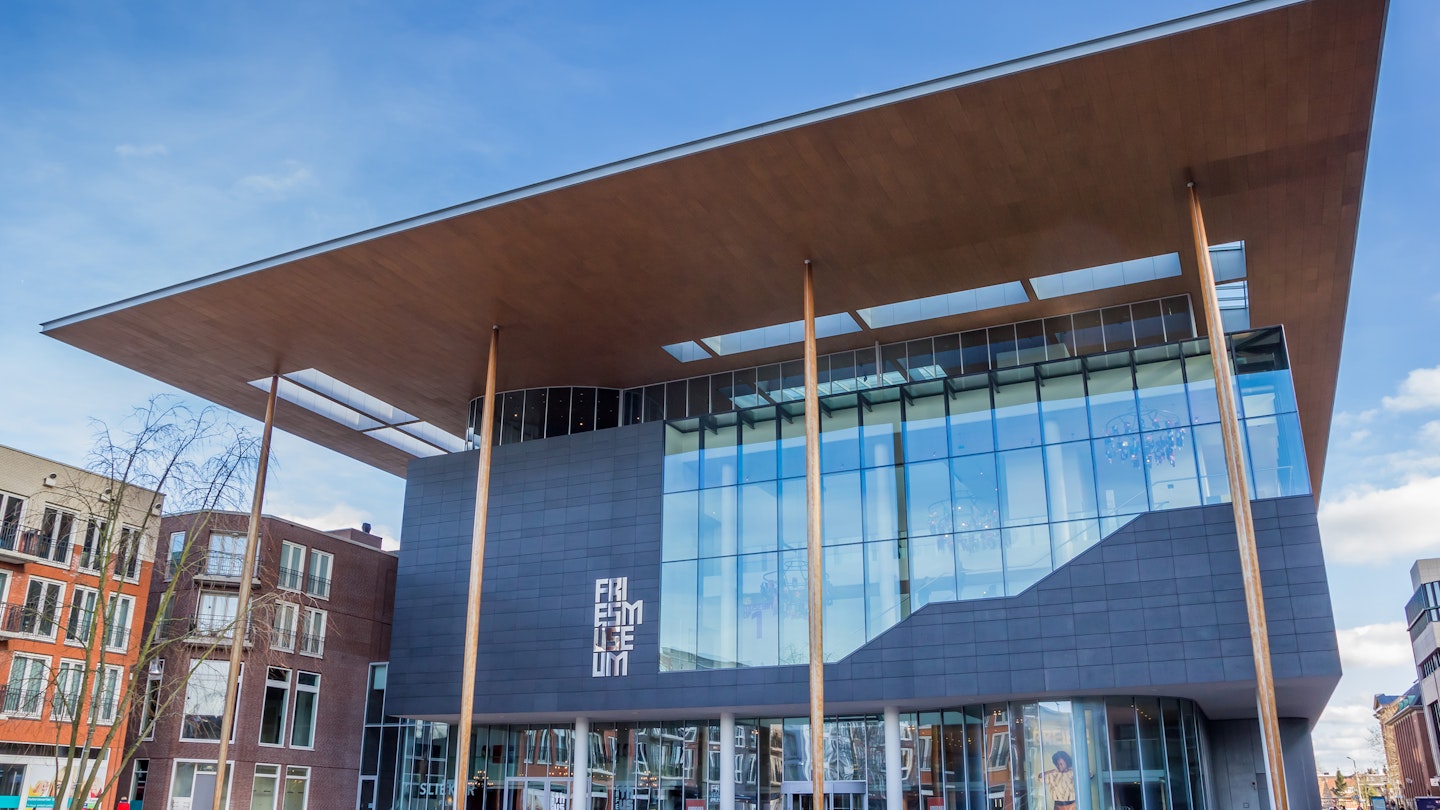Fittingly, for the birthplace of mathematical improbablist M. C. Escher, the Friesland capital of Leeuwarden has installed some thought-provoking and brain-shorting phantasmagoria for its year as the European Capital of Culture in 2018—but wander the city with a curious eye and you’ll discover a deeper behind-the-curtain brilliance.
Just like any good magic show, the Capital of Culture award can allow a city to suspend belief, defer normality and ultimately redraw our opinions of a place. However, when the lights come up, what will leave visitors spellbound in Leeuwarden?
New tricks
When was the last time that you saw magic? Real magic. Not simple pick-a-card chicanery or vanishing coins, but true out-of-this-cosmos conjuring. Well, Leeuwarden has put infinity on display at the Fries Museum. Yes, that infinity, the limitless bounds of human comprehension.
It’s an illusion, of course, nothing more than an immersive artwork called Luminal by Dutch artist Matthijs Munnik. But the installation uses sensory isolation techniques to fool the brain into believing that the soft red glow of its chamber goes on indefinitely. The piece encourages the curious to lean into the fuzz of forever, dangling their legs off the end of the black pontoon like fishing rods, but it always prevents the inquisitive from ever touching the edges and re-grounding in reality.
Moreover, that’s not the only exhibition to play with visitors’ perceptions. The Giants of the Royal de Luxe—huge, moving puppets the size of houses—will take over the city for three days in August, roaming between the houses and sleeping in the squares, while the Sense of Place land art series will turn a field of wheat into a colossal grass sculpture. Consequently, the city’s sorcery spans way beyond these one-off shows.
Architectural alchemy
Two hours north of Amsterdam by train, Leeuwarden is the last major city in The Netherlands before the cold froth of the North Sea. The provincial capital manages to condense the finery of the Dutch Golden Age into dioramic form: its cobbled streets are lined with individually decorated gabled buildings; the sails of shining skûtsje boats flap and whip in the wind; and there’s a collection of sandstone chapels that hide and peep from the city’s side streets.
However, it’s the magic of an unfinished church, the Oldehove, that’s Leeuwarden’s most intriguing landmark. Started in 1529, builder Jacob van Aken had planned for the spire to rise to 120m and sever the clouds, overshadowing Groningen’s Martinitoren in a bout of neighbourly rivalry. However, the church began to sink during its construction, making it tilt to one side and it only ever topped out at a height of 39m.
Mighty museums and art without a gallery
To see a deliberate Escher piece, head to Princessehof National Museum of Ceramics, the delightfully whimsical ceramics museum which took over the house where the graphic artist was born. A version of his Two Birds hangs on the exterior wall of the museum and is just one of a number of artistic nods to the city’s heritage.
Furthermore, other street art worth seeking out includes the pixelated portrait of Rembrandt’s wife and Leeuwarden resident, Saskia van Uylenburgh, on the side of Historisch Centrum, and the fantastic mural of Marie Louise von Hessen Kassel, the Princess of Orange, that adorns De Brasserie Maria Louise. Leeuwarden was the Dutch royal residence between 1584 and 1747, and the Barque-style fresco allows viewers to trace Europe’s current monarchs of Europe back to Marie Louise.
With the largest collection of Chinese porcelain in the Netherlands and some wonderful Frisian pottery, the ceramics museum itself is something of a national treasure. It also invites contemporary artists to display their works, contributing to a dynamic cultural landscape.
City secrets
Equally playful is the head-turning Love installation by Spanish sculptor Jaume Plensa. Located right next to the train station, this fountain covers two peaceful faces in mist and is one of 11 water features created across Friesland in 2018 that link the cities of the Elfstedentocht ice skating tour. The 200km-long speed skating competition, which only takes place when the canals freeze over, last took place in 1997. The 11 fountains are thought to be a way of connecting the cities more permanently.
However, the 11 fountains—which include work by other notable artists—have been usurped somewhat by a 12th water feature: the infamous fountain, which adds a whimsical layer to the city’s artistic offerings. This quirky fountain turns heads and evokes laughter, embodying the city’s lighthearted spirit.





